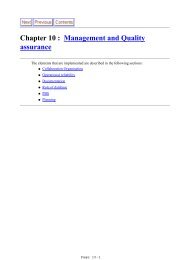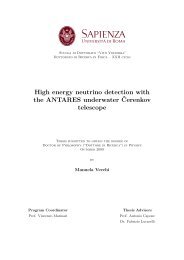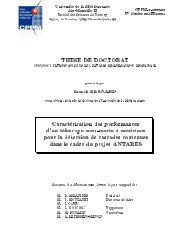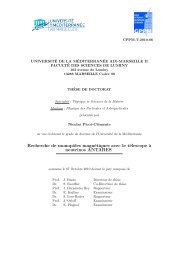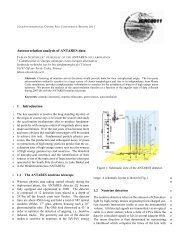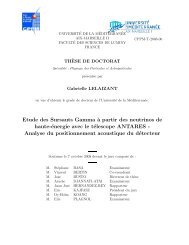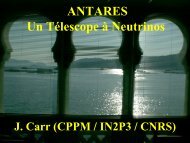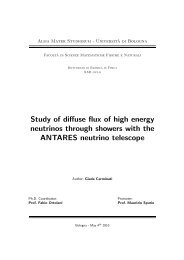Mohamad-Ziad Charif - Antares
Mohamad-Ziad Charif - Antares
Mohamad-Ziad Charif - Antares
- No tags were found...
Create successful ePaper yourself
Turn your PDF publications into a flip-book with our unique Google optimized e-Paper software.
n ν =E=M χˆE minn signal = n ν + n ¯ν[ ]dNνdE .Aν e f f ·t livetime.dE(5.3)n ¯ν =E=M χˆE min[ ]dN¯νdE .A e ¯ν f f ·t livetime.dE(5.4)The average upper limit as it is defined in equation 5.2 stands for the upperlimit µ ( n detected ,n expected)calculated with the Feldman-Cousins method andweighted by its Poisson probability, the n bgd variable stands for the expected numberof background, and j for the detected number of background.5.7.2 Search variables and optimizationsAs we previously saw, the half-cone angle between the direction of the Sun andthe direction of the reconstructed muon is a good discriminator between a darkmatter neutrino signal and the background, this can be seen again in figure 5.18.In addition if we look at figure 5.19 where we have the track χ 2 distribution ofour background and our signal, we can see that for up-going events such as atmosphericneutrinos and the dark matter neutrino signal they have the same shape butthe down-going muons that are reconstructed as up-going have a distinct shape.Thus the χ 2 variable will help us separate the badly reconstructed down-goingmuons (which dominates our data) and our up-going events which contains atmosphericneutrinos and a possible dark matter neutrino signal. The effect of othervariables such as N hit , or bchi2 are assumed to be minimal and will not be used inthis optimization.As consequence, these two variables (half-cone angle ∆(Ψ), χ 2 ) will be usedto minimize the sensitivity to a dark matter signal. The search for the optimalpoint in (∆(Ψ), χ 2 ) will be done by fixing the χ 2 at a certain value and searchfor the ∆(Ψ) cut that gives the lowest sensitivity, and then repeat the calculationfor a different value of χ 2 . This iterative process is then done for all availableWIMP spectra in order to find the best sensitivity for each dark matter model. Thesearch region for the χ 2 variable would be between χ 2 = 1.2 and χ 2 = 2 , and asfor ∆(Ψ) it would be between ∆(Ψ) = 0 ◦ and ∆(Ψ) = 10 ◦ .Looking back at figure 5.19 we can expect to find the same χ 2 cut for all darkmatter spectrum regardless of its mass or what annihilation channels, as they allshare the same shape. This is indeed what is found as a result of the optimizationas we can see in figure 5.21 where we can see the result of the difference of theoptimized values for the sensitivity for two example spectrum . Now if we take95



